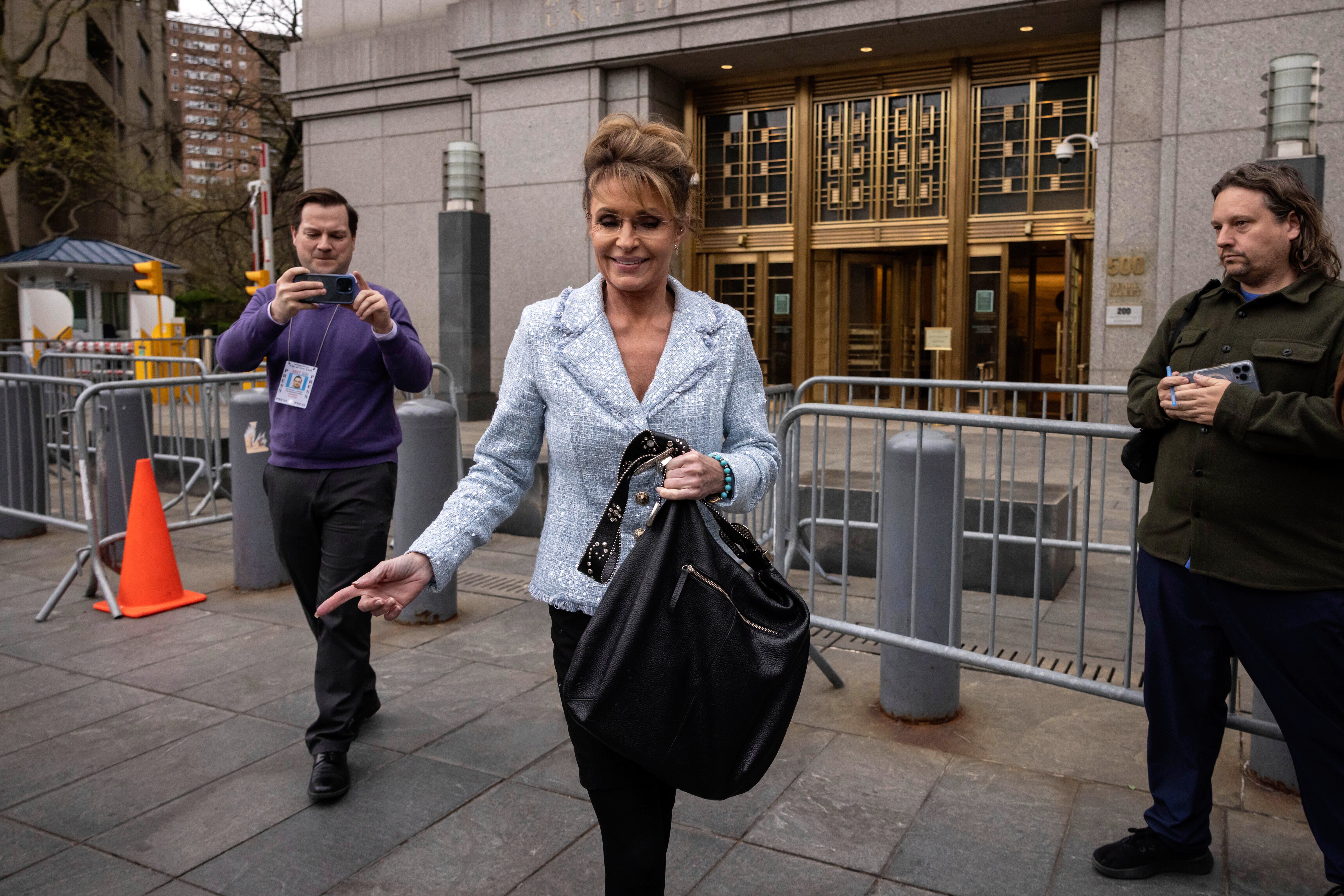Sarah Palin has lost her defamation case against The New York Times — again.
Last year, the former Alaska governor was awarded a new trial in her libel lawsuit against the newspaper, which she claimed had smeared her in a 2017 editorial criticizing volatile political rhetoric.
In February 2022, a New York City jury in federal court unanimously determined that the newspaper and then-editorial director James Bennet were not liable for defamation.
On Tuesday, after fewer than three hours of deliberation following a four-day trial, yet another federal jury in Manhattan determined that the newspaper was not liable for defaming her.

The former Republican vice presidential candidate does not know whether she will appeal, she told reporters as she left the courthouse on Monday. She said she plans to go return to Alaska and “get on with life.”
At the center of Palin’s case was an editorial from the newspaper written in the aftermath of a 2017 shooting at a congressional baseball game that criticized America’s “lethal politics.”
Palin was not the subject of the editorial, but a map created by her political action committee — featuring crosshairs over Democratic-leaning congressional districts — was cited as an example, pointing to a 2011 shooting in Arizona that nearly killed then-congresswoman Gabby Giffords.
In the course of editing the story, Bennet added a sentence saying that “the link to political incitement was clear” — which Palin argued had falsely implied a causal link between herself and the 2011 shooting. The editorial was corrected within hours.
Palin told the jury in her 2025 case that she felt “defenseless” after the editorial was published.
“It just kicked the oomph right out of you,” she testified Monday.

After losing in 2022, a federal appeals court awarded her a retrial after finding that “several major issues” from the initial proceedings threatened to “impugn the reliability” of the jury’s verdict.
Before the jury’s decision was announced in the 2022 case, District Judge Jed Rakoff told the court that he was prepared to dismiss Palin’s complaint anyway, determining that no reasonable jury would find that the newspaper and editor acted with actual malice in publishing the article.
News of that announcement reportedly reached jurors through push alerts to their phones.
Palin’s claims marked the rare case in which a libel suit against a newspaper made it to trial, one closely watched by First Amendment lawyers and media organizations for its potential impact to broad legal protections for journalists and publishers when writing about public figures.
The facts of the case were largely the same as they were three years ago, but the media and political landscapes have shifted radically and frequently collided since then. Palin’s case appeared primed to take on the Supreme Court’s landmark precedent from 1964’s New York Times v Sullivan, which determined that public figures like Palin must prove publishers acted with “actual malice” and a reckless disregard for the truth.
Donald Trump and his allies, meanwhile, have repeatedly pushed lawsuits taking aim at that precedent, and the president routinely threatens broadcasters and suggests adversarial coverage of his administration is “illegal.”
Is Kai Trump the next Alex Cooper? President’s granddaughter turns to interviews
Trump admin gives markets hope on China tariffs ‘de-escalation’: Live updates
Top producer at 60 Minutes quits over ‘journalistic independence’ amid Trump feud
ICE ‘disappeared’ Venezuelan immigrant who accidentally entered Canada
Three prosecutors in Eric Adams case resign, refusing to admit ‘wrongdoing’
Why Pete Hegseth’s fate is tied up in the debate over attacking Iran







